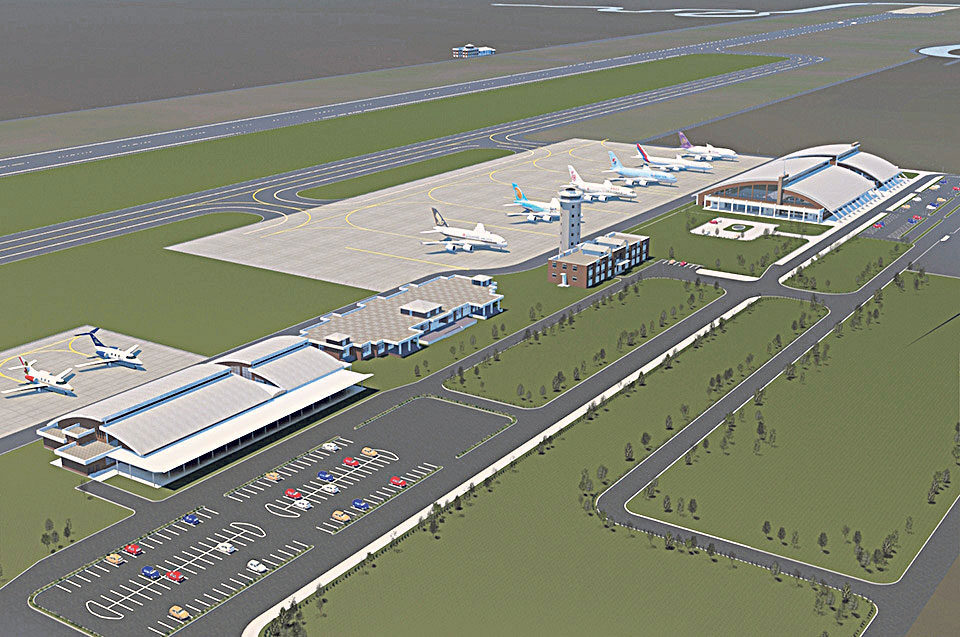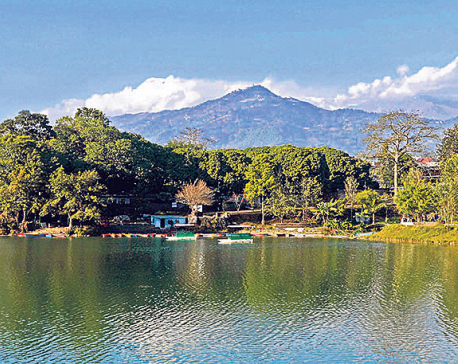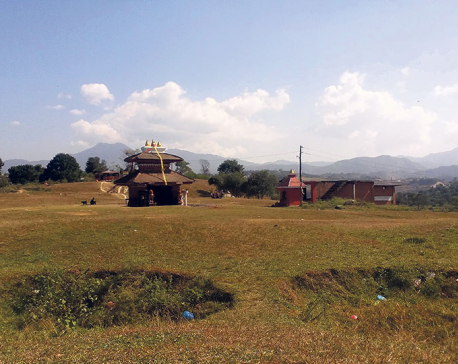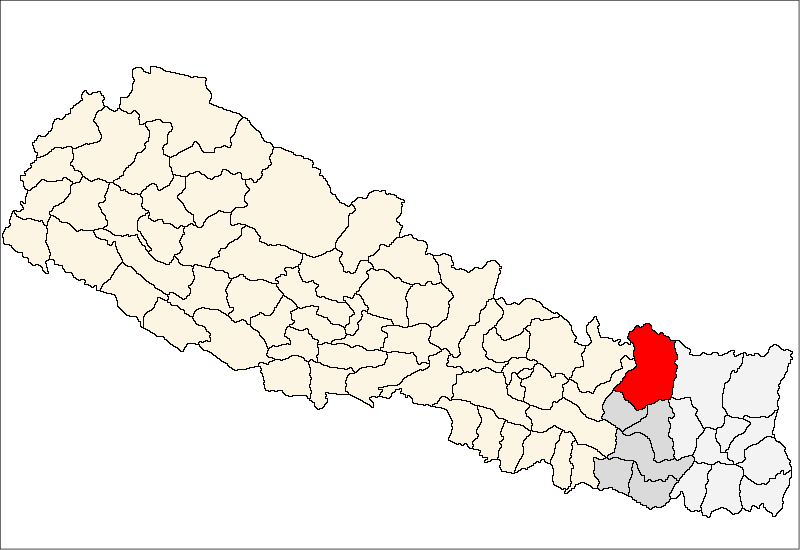
OR
Opinion
Nijgadh Airport: A Strategic Move towards Nepal’s Prosperity
Published On: April 21, 2023 09:00 AM NPT By: Dr Atindra Dahal


Dr Atindra Dahal
The author is an associate professor at Kathmandu School of Law, Nepal.news@myrepublica.com
It is reasonable to consider a vision that involves the construction of an international airport in Nijgadh with minimal impact on the environment and prompt compensation measures for any potential damage.
For almost half a decade, there has been a heated debate at the national level, from politicians to civilians, regarding the proposed International Airport to be constructed in Nijgadh. The topic of environment versus development has gained significant attention in the country, including among intellectuals. Almost every citizen has been engaged in discussions and debates on the subject. However, arguments and counterarguments from both passionate supporters and strong opponents of the proposed airport have been overly romanticized with various logics and seemingly convincing standpoints.
Nevertheless, it is reasonable to consider a vision that involves the construction of the airport with minimal impact on the environment and prompt compensation measures for any potential damage. This approach would facilitate the socio-economic transformation of the nation, as the airport is a crucial and immediate requirement for the country and its citizens as a whole.
Right reasons
The tragic accidents involving Pakistan and Thai Boeing aircrafts in 1992 had a profound impact on Nepal, prompting the need to explore alternative options for an international airport. Currently,
Tribhuvan International Airport is the only airport in Nepal that meets international standards. However, it is relatively small with only one runway, leading to repeated air traffic congestion and holding for an average of 10 minutes or more. The airport has also witnessed incidents of aircraft skidding off the runway, resulting in minor or major accidents in the past. Additionally, visibility at the airport is often below fair conditions. As a result, a survey conducted in 1995 prioritized Nijgadh as the most viable location for a new international airport among seven different feasibility study options. This decision was based on careful considerations and assessments of various factors.
As per reports, the proposed airport is expected to occupy 2556 hectares of land, with an additional 6100 hectares allocated as airport area. It will feature 2 runways, 6 boarding gates, 34 check-in points, 6 security posts, 35 immigration stations, and 8 custom sections. Once constructed to its optimum scale and fully operational, the airport is estimated to serve 60 million passengers annually. In terms of land area, currently, the largest airport is King Fahd International Airport, covering 77600 hectares, followed by Denver International Airport at 13571 hectares and Dallas International Airport at 6953 hectares. In comparison, the proposed airport in Nijgadh would be approximately 2 lakh hectares, a fraction of the land area of the largest airports in the world. It's worth noting that other countries, such as Turkey, are also constructing airports on much larger land areas, with a recent example being a new airport spanning 7650 hectares, which resulted in the felling of over six lakh trees. In contrast, the proposed airport in Nijgadh is being debated for approximately two lakh trees, highlighting the relative scale and impact of the project.
Every development project costs the environment more or less; development with zero damage is tantamount to utopia. Globally, only X-Mas trees cost 40 million trees and pencil industries do the same for 8 million; among them 0.5 million are being cut down only in India, annually, as claimed in book ‘The Living Forest’, co-authored by Joan Maloof and Robert Llewellyn. More Trees than ‘to be cut in Nijghad’ should be planted nearby. Government has avowed accordingly. Thus, citizens too should act accordingly to incentivize the government and subsidize the loss. Science has developed a new tree that has equal strength and growth equal to 80 years’ old Saal tree in 10 years. Planting such plants benefits us greatly and early. We should be rational enough to calculate pains and gains. Owing to the analysis, it goes rational to act in such a way that heralds higher volume and velocity of competitive advantages than mere sticking on puritanical polemic of persevering forest.
Loss or plus?
Even if we withdraw from construction, it does not guarantee 'no ecological and environmental ruin', as some staunch critics view this as merely an excuse to degrade the remaining ecological resources. It is true that carbon emissions from other countries also contribute to this issue. However, the benefits of the airport will exclusively belong to us. Therefore, there is no justification for completely abandoning the project, as there is no compelling reason to overly condemn it.
The proposed site for the airport has a solid rock foundation, making it suitable for heavy modern planes like the Airbus 300. Searching for an alternative location is not a convincing argument and would be a waste of time. Hilly and mountainous regions are not viable due to their rough, unsuitable topography. Moving to other areas in the Terai region with dense settlements would be financially unaffordable due to compensation costs. Since the projected site is a state-owned forest, no compensation is required.
Furthermore, having an airport amidst a dense forest would make it the first "Greenery Airport" in the world. The timber obtained from the tree cutting at the site, approximately 200,000 cubic meters, can cover 30 percent of the construction expenses. As reported, the project would provide direct employment to 5,000 people and indirectly benefit 200,000 individuals through improved employment opportunities. The expansion of other infrastructure around the airport would accelerate rapidly, resulting in significant positive impacts on the lives of the local population.
The proposed airport is equipped to support takeoff and landing even in zero visibility conditions, ensuring reliable operations. Additionally, with the construction of the Kathmandu-Nijgadh fast-track, the airport's location would be convenient for passengers traveling to and from Kathmandu, providing comfort and convenience. Furthermore, the airport is situated in close proximity to the East-West highway, making it easily accessible and improving safety from a security perspective.
The global trend of air travel is experiencing rapid growth, with projections from the International Air Transport Association indicating that around 7.2 billion people will be traveling by air by 2035, with 65 percent of them being Asian nationals. In line with this, China has reported plans to construct 30 new airports this year, in addition to the 230 airports that are already in operation. India also aims to add 100 more airports within the next 25 years.
In Nepal, the number of tourists has been steadily increasing, with 1.3 million tourists visiting in 2019, and a target of welcoming 2 million tourists in 2020. The country aims to further expand these numbers in subsequent years. The existing international airport in Nepal served 1.9 million passengers in 2008, which increased to 5.3 million passengers in 2016, highlighting the need for expanded airport infrastructure.
While Pokhara and Bhairahawa have recently upgraded their airports, these airports only cater to regional flights. Therefore, the construction of the Nijgadh airport is essential to support Nepal's mission of welcoming a large number of tourists as planned, and to accommodate the growing demand for air travel in the region.
By completing the Nijgadh airport project early, Nepal can save on high parking charges currently paid to India. This will also enable Nepal to offer transit services to airbuses from other routes, similar to what countries like Thailand, Singapore, Hong Kong, and Dubai are doing. This can result in significant revenue generation by offering parking facilities to international airlines. Establishing an air hub in Nijgadh would be a valuable asset for Nepal, as it would greatly enhance connectivity and elevate the country's status as a regional aviation hub.
Many economically booming countries, often referred to as "tiger economies," have a significant Buddhist population. According to James O'Connor's book, 'The Fiscal Crisis of States,' approximately 500 million Buddhists residing in these countries are highly interested in visiting Lumbini, the birthplace of Lord Buddha. In 2018, out of 1.2 billion global tourists, 13 percent were Buddhist religious tourists, as highlighted in a report titled 'Investing on Buddhist Circuit.' Therefore, the construction of the Nijgadh airport in Nepal is crucial in order to attract these Buddhist tourists and tap into the potential of the growing Buddhist tourism market.
The end of the political transition in Nepal marks the beginning of a new era of economic prosperity. Projects such as the Melamchi project, Upper Tamakoshi hydro, Kathmandu Terai fast-track, and Nijgadh airport can serve as exemplary initiatives for the country's progress. It is important to utilize resources judiciously and ensure that they are scientifically replenished through other means. As the construction of the airport may take a decade, efforts should be made to ensure that re-plantation of trees is carried out alongside the construction process. Denouncing the construction of the airport solely based on biased arguments of environmental damage would be detrimental to the nation's progress and could lead to increased poverty. Instead, a balanced approach that minimizes losses and provides timely compensation should be adopted. Let us approach this issue with a calm and rational mindset, thinking creatively and acting in the best interests of the country's sustainable development.
You May Like This

Human Activities a Threat to Wetland Ecosystem
Encroachment, irrational infrastructure development, and anthropogenic activities have all contributed to the degradation of Nepal's wetland region. ... Read More...

Exploring artistic expression in open air
KATHMANDU, Oct 28: Amateur artists Dibesh Pradhan and Rakesh Chandra Shrestha, both colleagues at Nepal’s foremost college of fine arts Lalit... Read More...

UN Environment partnering with LEAD Nepal for waste management
KATHMANDU, September 11: UN Environment is partnering with Leadership for Environment and Development Nepal (LEAD Nepal) for waste management in Nepal. Read More...




Just In
- NEA Provincial Office initiates contract termination process with six companies
- Nepal's ready-made garment exports soar to over 9 billion rupees
- Vote count update: UML candidate continues to maintain lead in Bajhang
- Govt to provide up to Rs 500,000 for building houses affected by natural calamities
- China announces implementation of free visa for Nepali citizens
- NEPSE gains 14.33 points, while daily turnover inclines to Rs 2.68 billion
- Tourists suffer after flight disruption due to adverse weather in Solukhumbu district
- Vote count update: NC maintains lead in Ilam-2













Leave A Comment